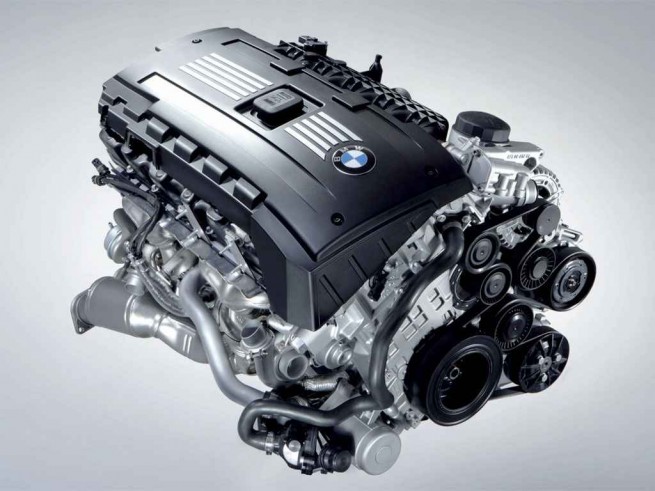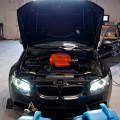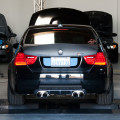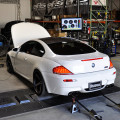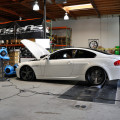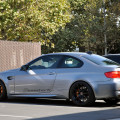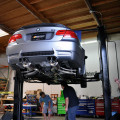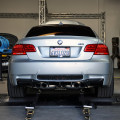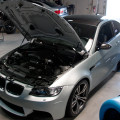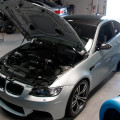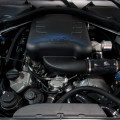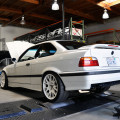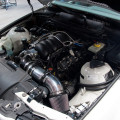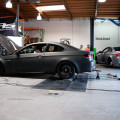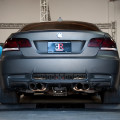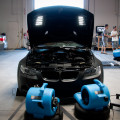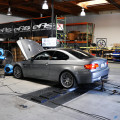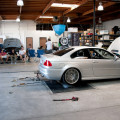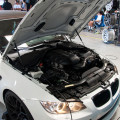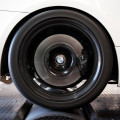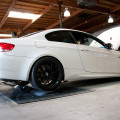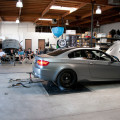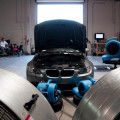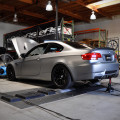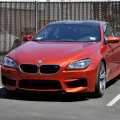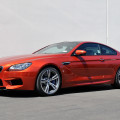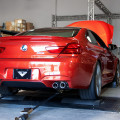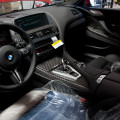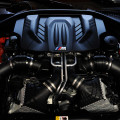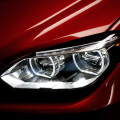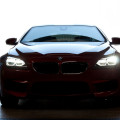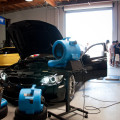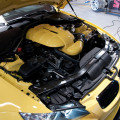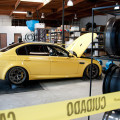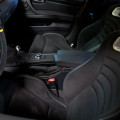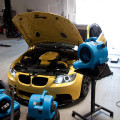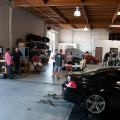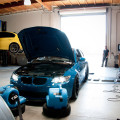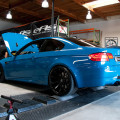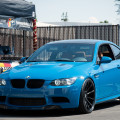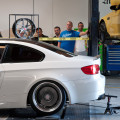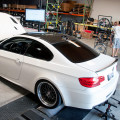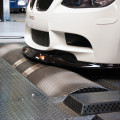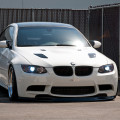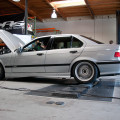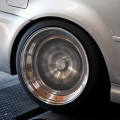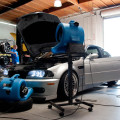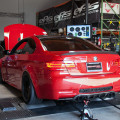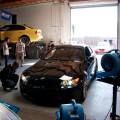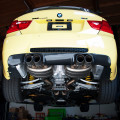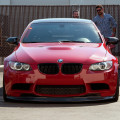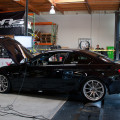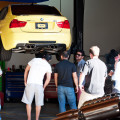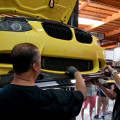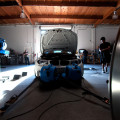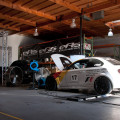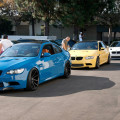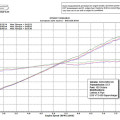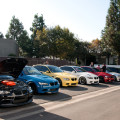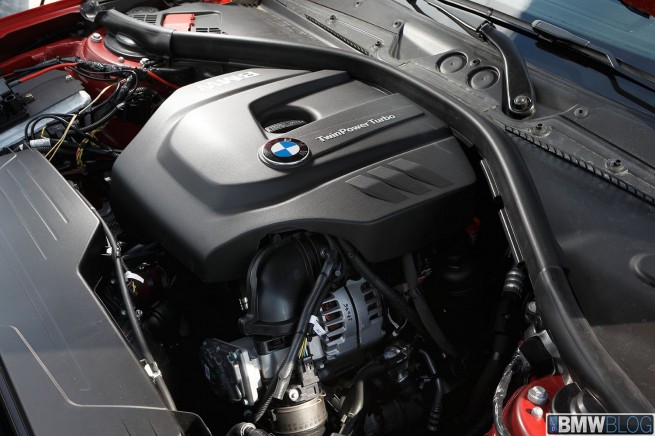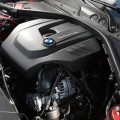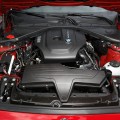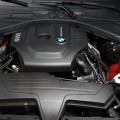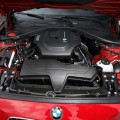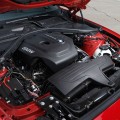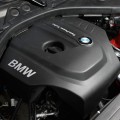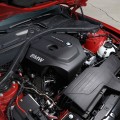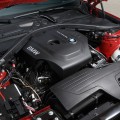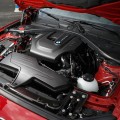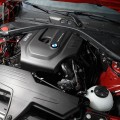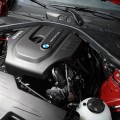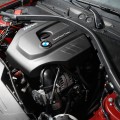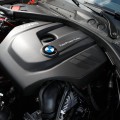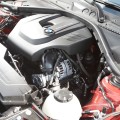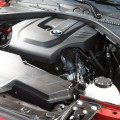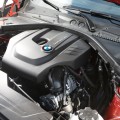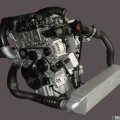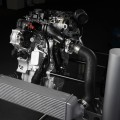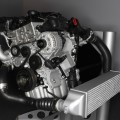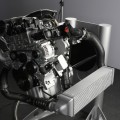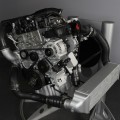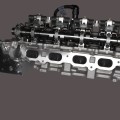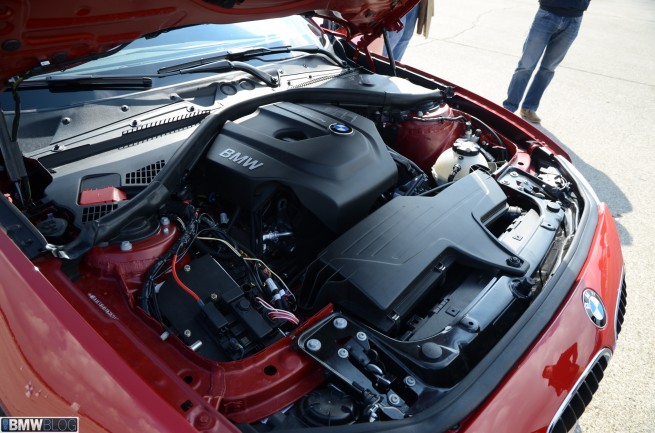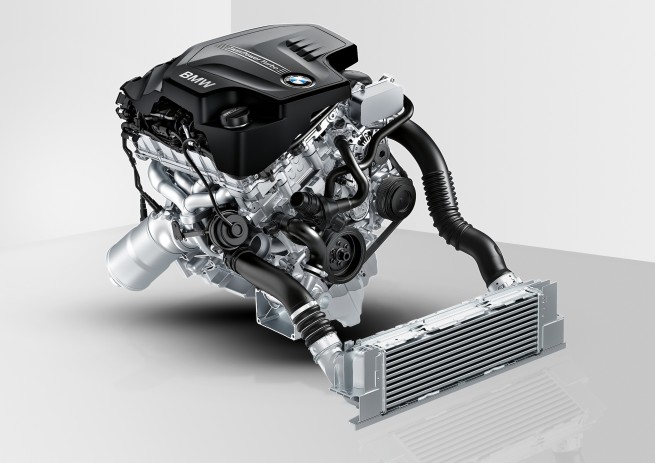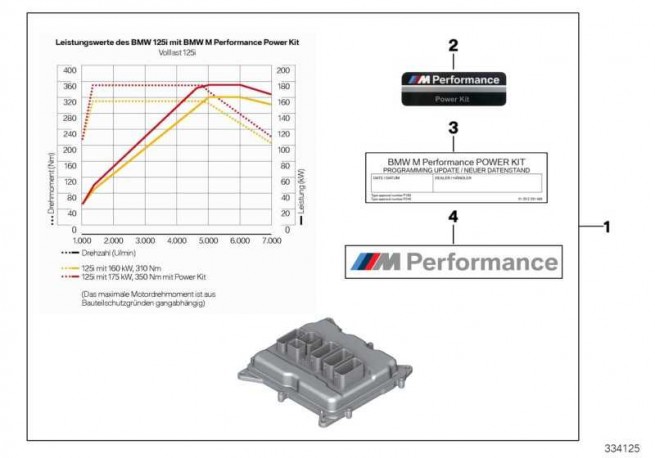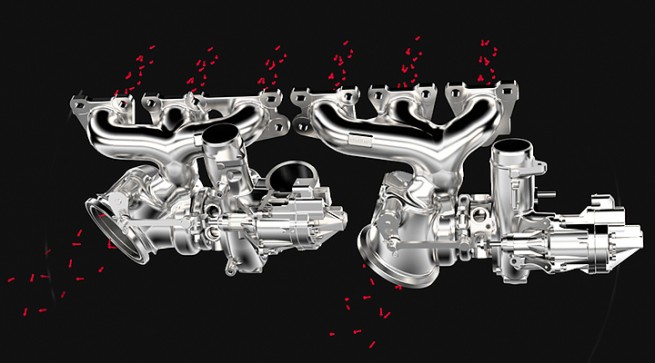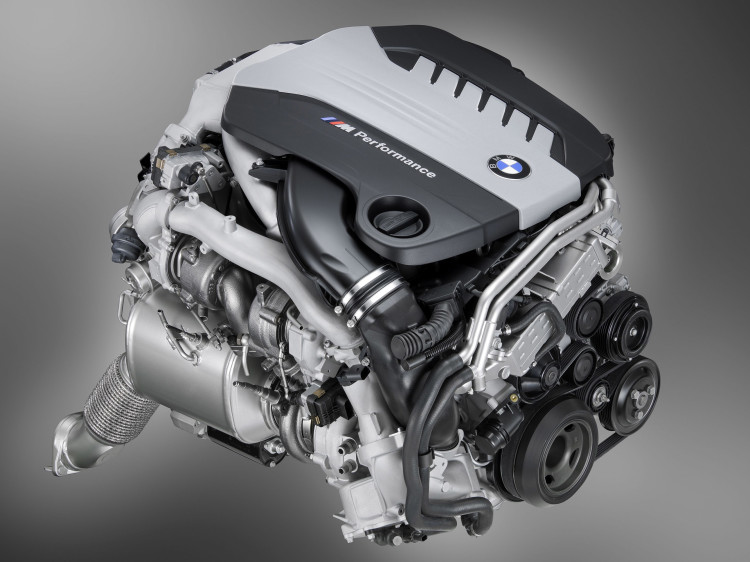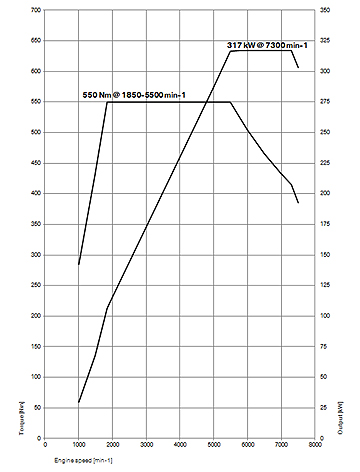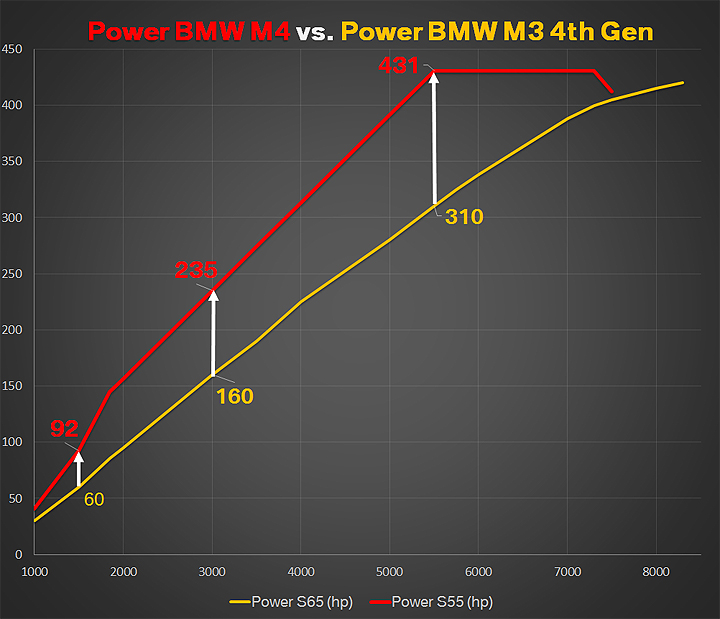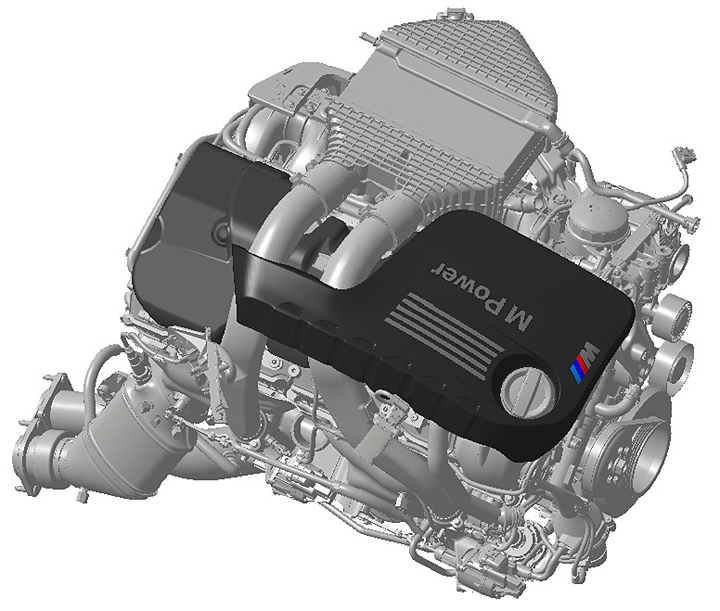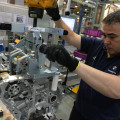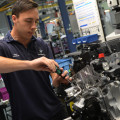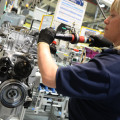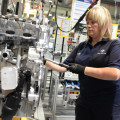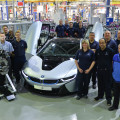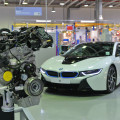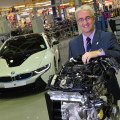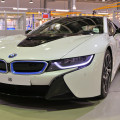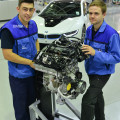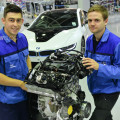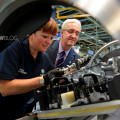The day started at about 3AM with a quick trip to the gas station, the ATM and, of course, a pit stop at the 24-hour Starbucks located off of SR-210. My destination was clear: south Miami but getting there would prove to be a chore as Google Maps was kind enough to inform me that I was just over 5 hours 27 minutes from my intended destination – at the current, 3AM traffic. I knew I had to make it before 9AM but I knew I’d need to make my destination sooner rather than later to avoid the inevitable grind of Friday morning Miami traffic lest I be late to my appointment.
My appointment was a special one, too. I was headed to the renowned BMW tuner Active Autowerke based in Miami with a singular goal: could they help me create an E91 330i Touring – a car that was never brought to the United States market? Thanks to a bit of a loophole for the E9X 3 Series naturally-aspirated engines there was a method by which to build up the engine to 330i levels of performance and Active had the key to unlocking that potential.
![My BMW 330i Wagon and the Infamous Three Stage Intake Manifold Photo My BMW 330i Wagon and the Infamous Three Stage Intake Manifold]()
For those that don’t know – in 2005, BMW launched the MY2006 325i and 330i for the North American market as its introduction to the E90 chassis, both of which came equipped with the then-new 3.0 liter inline six, magnesium block N52 engine – with it bringing the variable valve system Valvetronic to the 3 Series line for the first time. Interestingly, to step up the performance of the 330i over the 325i, the 330i came with a three stage intake manifold which allowed for the airflow into the engine to be varied across the rev band thus allowing power to be optimized in the midrange and top end of the revs. The 325i came with only a single stage intake manifold hence a 40HP power deficit from the 330i at the crank. For MY2007 – the twin turbocharged 335i replaced the naturally aspirated 330i while the base 3 Series stayed with its single stage intake manifold – albeit with a slight bump of 15 German ponies taking total output to 230HP under a 328i badge.
Not long after the release of the E90, some enterprising BMW enthusiasts determined that, aside from the intake manifold and some programming in the ECU, a 325i/328i could accept the three stage intake manifold of the 330i and potentially recognize similar engine output. Over the next few months and years, a handful of people attempted the the upgrade, many succeeding but finding that without the software to utilize the uprated manifold, the results were minimal – short of the non-direct injection 330i. Soon, tuners stepped in offering to flash ECU’s to allow drivers to access the potential of the manifolds thereby achieving large horsepower gains. One such tuner that came to the forefront of this modification was Active Autowerke with their ECU flashes that improved output of the standard N52 engine or a tune that would “activate” the three stage intake manifold.
Interestingly, when I purchased my 2007 328i Touring from my buddy, the car already came with the Active Autowerke Stage I tune which provided an incremental horsepower and torque gain while improving throttle response. That was all well and good, but the wagon had the tune done prior to the addition of the larger volume European 330i airbox and BMW Performance exhaust much less the infamous three stage manifold. After much hand wringing over what power might be available and at what price, I managed to procure, rather cheaply, a three stage intake manifold off of a late model Z4 3.0Si( you can also buy brand new parts from Tischer BMW as a full kit here – otherwise your best bet is to try and find the parts via car part recycling sites). Soon after getting my hands on the key parts(including new hoses as the existing ones tend to become fragile over time) an appointment was made with Active Autowerke to both install and optimize the tune on the engine – a first for Active to both install but then work with a car on the dyno to extract the most out of the modification. Appointment set, I was one week away from having a 330i Touring.
After a venti coffee, another tank of gas and probably $10 in tolls from the Florida Turnpike, I found myself parked, 30 minutes earlier than I planned out front of Active’s office; jittery from too much coffee yet excited at the prospect that the N52 three stage intake mod could really work. Once inside the gate and settled I was able to speak to Viral about what the process would be for the day followed by a conversation with Rob Hugh – one of a team of brothers that have owned Active Autowerke since its inception in 1981 and definitely a hardcore family of BMW lovers. Rob and his brothers had me squared away before I’d even arrived by letting one of their techs, Arturo, work on my wagon for the entire day to get both the requisite parts installed and the tune completed.
![My BMW 330i Wagon and the Infamous Three Stage Intake Manifold Photo My BMW 330i Wagon and the Infamous Three Stage Intake Manifold]()
Soon-to-be-330i wagon rests on the dyno
After a handful of dyno runs to kick off the day and check the baseline for the car the ECU was pulled and the Stage I N52 tune was reinstalled and run again – reflecting the uptick in power and better optimized with the larger airbox and better-breathing exhaust. While the power was showing on Active’s Mustang dyno at the top end of the engine something else reared its head. At around 5,500 RPM the engine was dumping in fuel, in other words, running very rich and resulted in a very low air-fuel ratio causing the power to fall away sharply – not entirely unexpected as the N52 330i is known to run a bit rich. It turned out the cats were reading too hot and the car was overriding its tune to counter what it perceived as overheating cats. The reality was, that running on a dyno, a car never has quite the same airflow as a car would in motion. While we all knew it was likely just a result of the dyno Rob’s brother and Active’s BMW ECU jedi, Karl, carefully studied the multiple dyno runs to assess ways of bolstering the AF ratio.
After a few revisions that improved the results – it was time for the manifold to be installed and Arturo went to work dismantling the upper portion of the engine to access the soon-to-be-replaced intake. Interestingly, it was amazing how much of the engine had to come out – the strut brace, the airbox and it’s piping, the engine cover – so much was removed just to grant access to the small nook just to the right of the venerable inline sixes’ cylinders. After a few hours of working to get the intake out, fit the piping and refitting all of the parts Arturo slipped behind the wheel, thumbed the Start button and with a snort from the exhaust the wagon came back – full of life and with a sharper throttle to boot.
![My BMW 330i Wagon and the Infamous Three Stage Intake Manifold Photo My BMW 330i Wagon and the Infamous Three Stage Intake Manifold]()
The aptly named Active Autowerke Blitzkrieg
During the early afternoon, to introduce me to some of Active’s more powerful projects, Rob took me out in a very special car, Active Autowerke’s own E92 M3-based Blitzkrieg. The Blitzkrieg, named via a fan poll and fitting for what it can do – is a DCT-equipped M3, fitted with the latest Active Autowerke supercharger, meth kit and Active exhaust system rewarding those with a prodigious right foot with over 700HP on tap. Rob took me on a relatively short ride in the Blitzkrieg but in just a quick jet ’round the block, at full throttle the custom M3 felt as though it was melting time. The good news was Active equipped the Blitzkrieg with massive 12 piston calipers upfront bringing the coupe to a halt as fast as it was to 60 miles per hour. I couldn’t help but just laugh like a little kid the entire time at the unfiltered insanity that is the Blitzkrieg – it goes and stops so fast, sounds like a tornado under acceleration and will redefine what you think fast is. By comparison – I was hoping to see gains of 40 to 50HP from my E91 while Active managed to churn another 300HP+ from an M3 – impressive to say the least.
As the warm, orange sun began to set just outside of the garage doors and many of the remaining Active employees huddled around a recently finished customer M3, sleeves were being rolled up by Karl and his guys to see what could gains could be extracted from the engine after a handful of dyno runs power gains were being seen from approximately 2,500RPM onward but in a fairly lumpy manner and the issue of the engine running rich at the top end had reared its ugly head again. Throughout the day, I paced around like an expectant father in a waiting room with M3’s, Z8’s and various other Bimmers as my company, nervous that the tune wouldn’t take. Each time I was caught pacing, Rob or Arturo or Karl would confidently reassure me everything was on track and we’d get the power figures as hoped for.
![My BMW 330i Wagon and the Infamous Three Stage Intake Manifold Photo My BMW 330i Wagon and the Infamous Three Stage Intake Manifold]()
Karl studies the results of a dyno run
Sure enough, after a few more dyno runs and some tweaking to the ECU’s tune, the power was there – Active had achieved, at a minimum, the stock 255HP output with massive gains over the stock 328i in the midrange where the DISA actuators within the intake could really flex their muscle. By this time it was nearly 8PM, I had been awake for over 17 hours and living out of a dyno-mounted BMW wagon and Active’s lobby – I was eager to get it off of the dyno and see what the car felt like. Karl and Rob’s dedication to seeing this through hadn’t wavered, though. What would end up being the final tune and last few dynos would show that Karl found the right tune – lighting in a bottle, if you will, and the air fuel ratio was registering acceptable levels.
![My BMW 330i Wagon and the Infamous Three Stage Intake Manifold Photo My BMW 330i Wagon and the Infamous Three Stage Intake Manifold]()
Arturo installing the three stage intake manifold
The result? Nearly 25HP picked up to the wheels at just over 5,000RPM – with correction the 328i was now pumping out somewhere in the range of 260HP to 270HP. Stacking the results up against previous dyno runs from a stock and tuned 330i and my E91 fell right above the stock 330i and right below the tuned equivalent. Active Autowerke had accomplished what many had speculated – yes, a 325i/328i can be converted to a 330i with the same or even slightly better output, improved throttle response and a much more potent rev range.
After swapping on a pair of rear Michelin Pilot Super Sports – the wagon came off the dyno, was test driven by Arturo and handed back to me. I pulled out of Active’s garage just after 9PM, exhausted but happy and more than impressed that Active kept much of their team on-hand hours after normal close to help finish the tune and get the results they knew where locked away in the N52B30.
![My BMW 330i Wagon and the Infamous Three Stage Intake Manifold Photo My BMW 330i Wagon and the Infamous Three Stage Intake Manifold]()
Leaving Miami and heading northwest to the 61st 12 Hours of Sebring I was quite pleased with the idea that this could be the only 330i wagon in the United States (or one of very few) and the entire project was completed using OEM BMW parts. The feeling of the car was not night and day, though. Karl mentioned that, as part of the tune, all adaptations learned by the car from me and the previous owners would be wiped out and that it would take a few miles before the wagon “re-learned” my driving style. To be honest, at 9:30 at night driving the US-27 to Sebring wasn’t the place to push the boundaries of my newly minted engine – I was exhausted and still had another 3 hours of snaking across back roads and tiny, Central Florida towns before I’d be at the front gate of Sebring.
My break-in would have to wait - but thankfully only 3 days.
Sunday morning after a headache-inducing weekend of sun, beer, and being carted around Sebring shooting photos, I pulled my dust-laden wagon out of the BMW CCA corral to begin another 3 hour road trip back to Jacksonville. On the ride back, I’d kept in the back of my mind what Karl said about the car needing to re-acclimate itself. Sure enough, just a few miles headed North on US-27 and I noticed a distinct punch in the midrange that previously had not existed, at 3,000 RPM onward the car would surge forward when the transmission was set to Sport or Manual. Passing power vastly improved, Active Autowerke managed to smooth out the power curve to the point that the car surged forward compared to lurching across the rev band from flat spots in power – I indeed had a 330i wagon.
Active Autowerke successfully built a U.S. spec 330i Touring via the three stage intake manifold and revised ECU.
1,000 miles in and the car feels just as good as that day after Sebring. Throttle and transmission response feels better, the whole of the powerband feels notably more usable than a standard 328i but with the same fuel economy. While it’s no doubt that a non-optimized Active Autowerke Stage 2 tune paired with the three stage intake manifold will churn more power and torque I have to recommend having Active optimize the tune for any other bolt-on gear you might have similar to the better-breathing airbox and exhaust I had equipped during the tuning process. However, for those who cannot make the jump down to Miami, Active does offer a mail-in service in which the ECU can be shipped down to Miami, flashed, and mailed back in matter of a few days to be dropped into cars with the three stage manifold.
![My BMW 330i Wagon and the Infamous Three Stage Intake Manifold Photo My BMW 330i Wagon and the Infamous Three Stage Intake Manifold]()
End result? A 330i Wagon
All in all – I came away very impressed with the quality of Active Autowerke’s work and the results achieved. I admittedly went into it with an air of pessimism having seen those without optimized tunes or no software upgrades not achieving the desired results. However, I stand corrected and happily so.
If you have an E9X 328i – go do this mod if you want more enjoyment out of your car – you won’t regret a more fun, usable car.
A special thanks goes out to Rob, Karl, Mike, Arturo, Viral and the entire Active Autowerke team for helping my E91 Touring achieve its full potential!
![gallery ids="101352,101353,101354,101355,101356,101357,101358,101359,101360,101361,101362,101363,101364,101365,101366,101367,101368" My BMW 330i Wagon and the Infamous Three Stage Intake Manifold]()
![gallery ids="101352,101353,101354,101355,101356,101357,101358,101359,101360,101361,101362,101363,101364,101365,101366,101367,101368" My BMW 330i Wagon and the Infamous Three Stage Intake Manifold]()
![My BMW 330i Wagon and the Infamous Three Stage Intake Manifold]()
![My BMW 330i Wagon and the Infamous Three Stage Intake Manifold]()
![My BMW 330i Wagon and the Infamous Three Stage Intake Manifold]()
![My BMW 330i Wagon and the Infamous Three Stage Intake Manifold]()
![My BMW 330i Wagon and the Infamous Three Stage Intake Manifold]()
![My BMW 330i Wagon and the Infamous Three Stage Intake Manifold]()
![My BMW 330i Wagon and the Infamous Three Stage Intake Manifold]()
![My BMW 330i Wagon and the Infamous Three Stage Intake Manifold]()
![My BMW 330i Wagon and the Infamous Three Stage Intake Manifold]()
![My BMW 330i Wagon and the Infamous Three Stage Intake Manifold]()
![My BMW 330i Wagon and the Infamous Three Stage Intake Manifold]()
![My BMW 330i Wagon and the Infamous Three Stage Intake Manifold]()
![My BMW 330i Wagon and the Infamous Three Stage Intake Manifold]()
![My BMW 330i Wagon and the Infamous Three Stage Intake Manifold]()
![My BMW 330i Wagon and the Infamous Three Stage Intake Manifold]()
![My BMW 330i Wagon and the Infamous Three Stage Intake Manifold]()
![My BMW 330i Wagon and the Infamous Three Stage Intake Manifold]()
The article My BMW 330i Wagon and the Infamous Three Stage Intake Manifold appeared first on BMW BLOG
